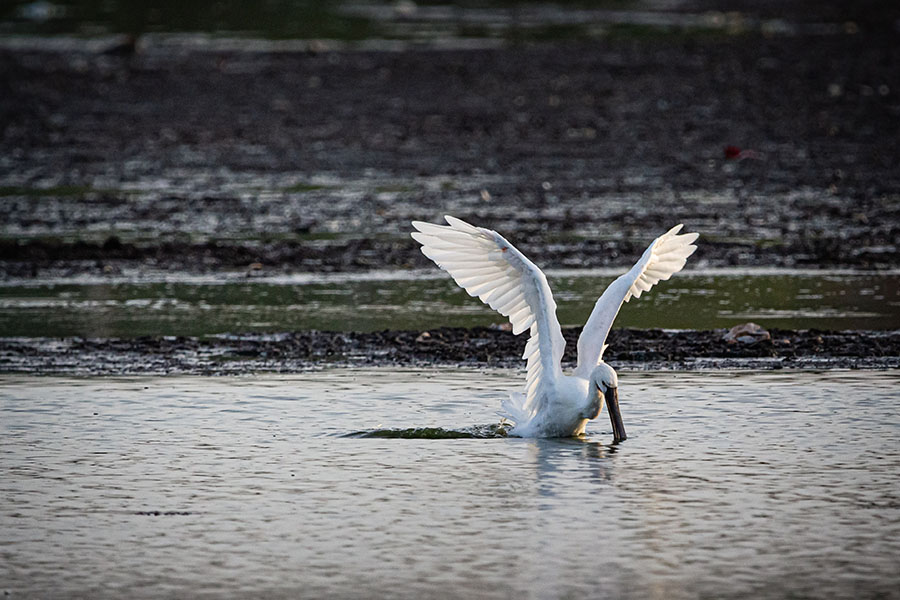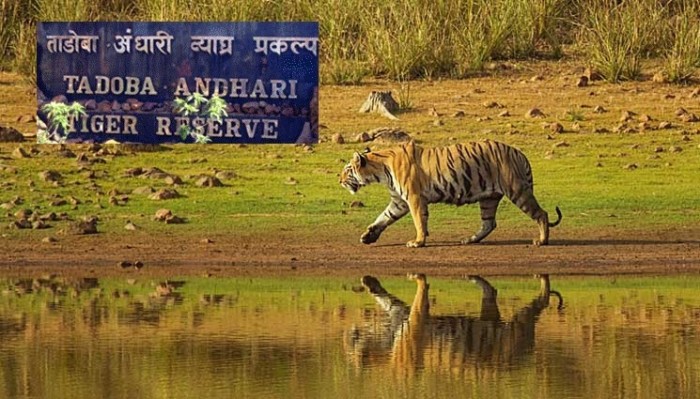Gallery:-


Overview:-
Notably Maharashtra’s oldest and largest National Park, the “Tadoba National Park”, also known as the “Tadoba Andhari Tiger Reserve” is one of India’s 47 project tiger reserves existing in India. It lies in the Chandrapur district of Maharashtra state and is approximately 150 km from Nagpur city. The total area of the tiger reserve is 1,727 Sq.km, which includes the Tadoba National Park, created in the year 1955. The Andhari Wildlife Sanctuary was formed in the year 1986 and was amalgamated with the park in 1995 to establish the present Tadoba Andheri Tiger Reserve. The word ‘Tadoba’ is derived from the name of God “Tadoba” or “Taru,” which is praised by local tribal people of this region and “Andhari” is derived from the name of Andhari river that flows in this area.
History:-
There is a great history behind the name of Tadoba National Park. Tadoba or Taru was the name of god of tribal people who reside in the dense Tadoba region of the forest. It is believed that Taru was a chief of village, who was killed in a legendary encounter with a tiger. After this, a shrine was made dedicated to the God Taru that exists under a huge tree and on the bank of Tadoba Lake. Likewise, ‘Andhari’ name was given due to Andhari River that wanders through the forest.
Earlier, the kings of Gond ruled this forest in the vicinage of the Chimur hills. During 1935, hunting was totally restricted, but later in the year 1955; the area of 116.54 sq. km (45.00 sq mi) was acknowledged as The National Park. Andhari Wildlife Sanctuary was made on the next forests in 1986 and later in the year 1995, the park & the sanctuary were combined together to form the present India’s 41 “Project Tiger”-Tiger Reserves.
Flora in Tadoba Tiger Reserve
The most popular species of trees is Teak and bamboo in this forest. Other common trees include:
- Ain (Crocodile Bark)
- Bija
- Dhaudab
- Hald
- Salai
- Semal
- Shisham
- Sisoo
- Shivan
- Surya
- Sirus
- Tendu
- Beheda
- Bel
- Chichwa
- Dhawada
- Kusum
- Hirda
- Karaya Gum
- Mahua Madhuca (Crepe Myrtle)
- Lannea Coramandelica (Wodier Tree)
In addition, Axlewood Anogeissus Latifolia is also found here that is fire-resistant species, while on the other side, Butea monosperma adds vivacious color to this forest. Arjun trees are also found at Panchadhara.
Fauna in Tadoba
Tadoba National Park is a popular tiger reserve that’s affably known as ‘The Land of Tigers’ as large number of tigers (approx.43) are found here. Apart from the species of Bengal Tiger, this park is home to other mammals like Sloth Bear, Leopard, Rusty Spotted Cat, Gaur (Indian Bison), Indian Mouse Deer, Ratel, Sambar, Wild Pig, Spotted Deer, Flying Squirrel, Four Horned Antelope, to name a few. As soon the night falls, the Small Indian Civet, the Palm Civet, the Ratel, and the Flying squirrel make their presence felt.
Some of the major wild animals that are always found in this park include:
- Hyenas
- Spotted Deer
- Wild Boars
- Barking deer
- Gaurs
- Four horned Antelopes
- Blue bulls
- Indian Pangolins
- Common Langoors
- Porcupines
Above all, there are approx 195 species of birds that include honey buzzard, crested serpent eagle, the shy jungle fowl, grey-headed fishing eagle, paradise flycatcher, etc. Species of reptiles are also found in this park like endangered Indian python, terrapins, star tortoise, cobra, etc. Apart from this, giant wood spider, the signature spider, and red wood spiders are also found during monsoon season.
Number of days:-
Number of days:-
Do’s & don’ts:-
Climate:-
Summer : The summer starts in March and ends by May. April and May are the hottest months in the park. Dehydration chances are higher. The skies will be clear. This is the best time to spot animals with their cubs near the lake. It is also a good time for bird spotting.
Winter : The winter starts in October and ends by February. The winter has pleasant climate and rich flora. Spotting small and large mammals are easier during this season. The migration birds can be spotted during this season.
Rainy : The park is closed for the rainy season. The rainy season starts by July and ends by September. The park receives heavy rainfall and the terrain becomes slippery. This causes hindrance for any vehicle to enter into the park. Spotting animals become rare during this season.
Notably Maharashtra’s oldest and largest National Park, the “Tadoba National Park”, also known as the “Tadoba Andhari Tiger Reserve” is one of India’s 47 project tiger reserves existing in India. It lies in the Chandrapur district of Maharashtra state and is approximately 150 km from Nagpur city. The total area of the tiger reserve is 1,727 Sq.km, which includes the Tadoba National Park, created in the year 1955. The Andhari Wildlife Sanctuary was formed in the year 1986 and was amalgamated with the park in 1995 to establish the present Tadoba Andheri Tiger Reserve. The word ‘Tadoba’ is derived from the name of God “Tadoba” or “Taru,” which is praised by local tribal people of this region and “Andhari” is derived from the name of Andhari river that flows in this area.
Season:-
This park gives a large visual treat of wildlife, especially while getting a chance to spot tigers. To view the real wildlife, the best time to visit is from February to May. During this time, Gaurs, tigers, herd of deer and other animals are easily seen in large numbers. Exploring these animals give thrilling experience and big treat to a trip.
